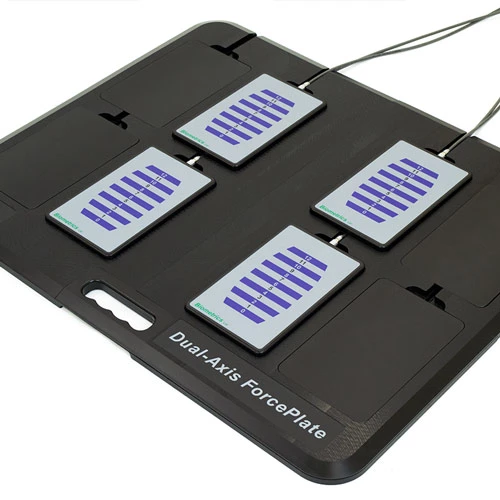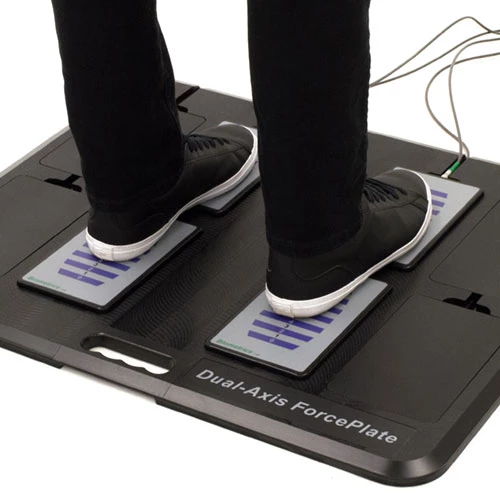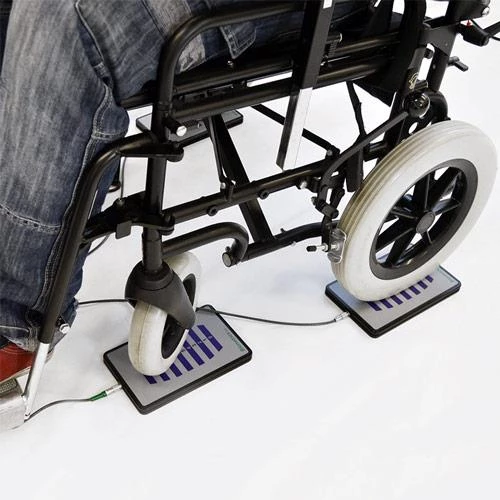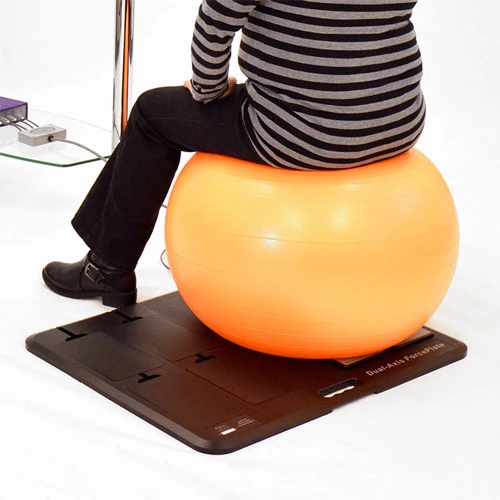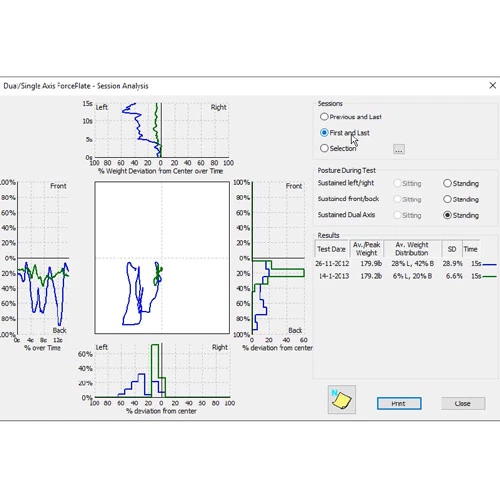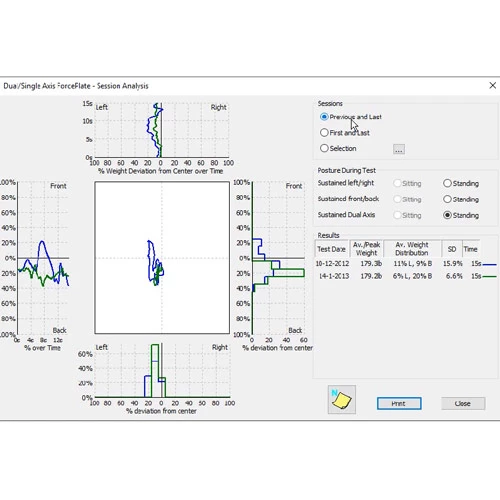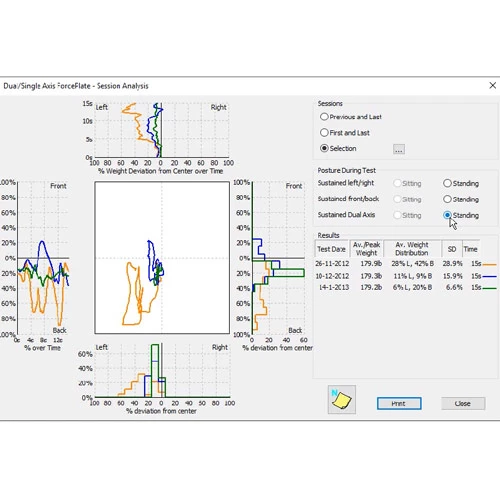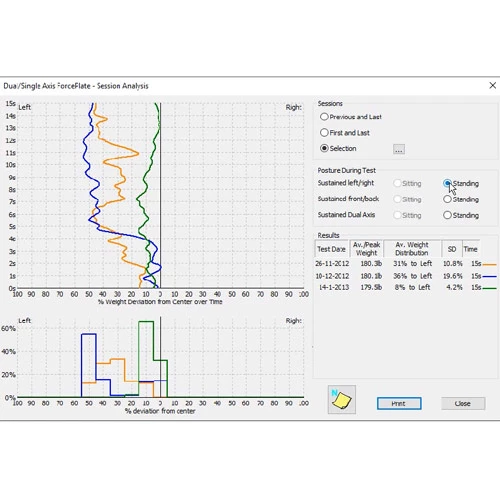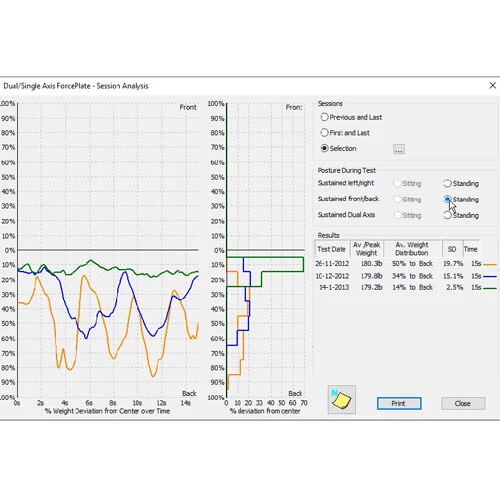Four ForcePlates
The dual-axis DFP4 ForcePlates system is designed to accurately and objectively assess a patient's ability to maintain postural stability on a static surface, and evaluate progress over time as an outcome measure.
Balance training is another major benefit of the dual-axis ForcePlate system. The interactive Activities bring an element of fun into the therapy session, motivating the patient to strengthen the lower extremities whilst also addressing proprioception, motor control and balance.
Dual-Axis Weight-Bearing Balance
Weight-Bearing Evaluation & Exercise
The patient stands on the ForcePlates with the medial arch placed over the gap between the front and back ForcePlates. Thus, foot positioning is standardized reducing any variability for analysis.
As the patient stands on the ForcePlates, the clinician easily activates the software to perform a timed balance test for 5,10,15,30 or 60 seconds. The patient's symmetrical weight distribution over the ForcePlates is scientifically quantified in both the anterior-posterior (front/back) and medial-lateral (left/right) axes simultaneously.
Fluctuations in the weight distributed over the ForcePlates are instantly measured and results displayed both in text and graph format for immediate feedback and analysis.
The average % deviation from the center documents symmetry of the patient's stance and the standard deviation % documents stability of the patient's balance.
Up to 10 tests can be compared simultaneously for progress reporting over time and reports are easily generated for outcome measures.
Balance training is a major benefit of the DFP4 Dual Axis ForcePlate System and the innovative, interactive Activities bring an exciting element into the therapy session, motivating the patient to exercise. Lower extremities are strengthened whilst also encouraging proprioception, motor control and balance.
For additional flexibility the ForcePlates can be removed from the BaseFrame and used with other everyday equipment to achieve functional goals.
Baseline measurements are taken of the patient's Limits of Stability within their comfort zone and these measurements are then used to set the single or dual axis activities. The parameters can be graded to suit the patient's physical and cognitive state, addressing various therapeutic objectives, as well as ensuring the goals are achievable for each and every patient.
The patient controls their balance for the activity by the loading and unloading of their weight distributed over the ForcePlates. Exercise graphs are generated for each exercise session and form part of the report.
The Activities can be saved in a set sequence and used again for the next session thus saving set-up time for the clinician as well as familiarizing the patient to the Activities.
All the Activities can be graded for progression over time and help build up the patient's confidence in their abilities whilst exercising towards good balance control.

Interactive Activities
Problems with balance are a common occurrence for patients following a brain injury or resulting from a chronic medical condition. Poor co-ordination and a loss of stability can lead to a lack of confidence and pre-dispose to falls.
In collaboration with clinicians, E-LINK Activities have been designed to meet the needs of patients following a Stroke or those with neurological problems as well as those with orthopedic conditions who may be well used to using Computer-based Activities.
The Activities therefore can be as simple as moving a ball from one side of the screen to another and holding the ball on a wall for a determined length of time; or just holding the seesaw in a steady balance. At the other end of the scale, the Activity may involve moving a marble through a complex maze or placing many jigsaw pieces in a puzzle.
All the Activities can be graded for progression over time and help build up the patient's confidence in their abilities whilst exercising towards good balance control.
Includes:
Requirements:
Dual-Axis ForcePlates are only available as a wired connection only to a computer.
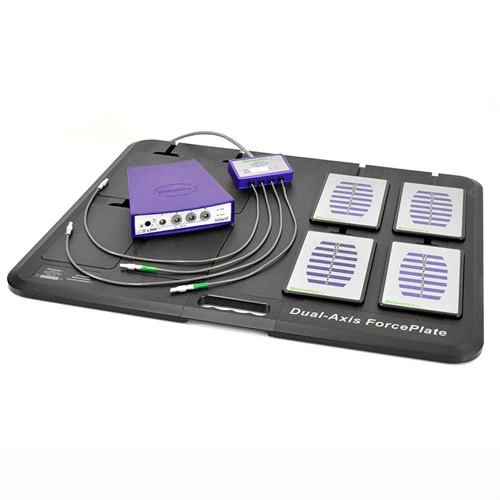
Lower Extremity Systems
E-LINK systems package together popular accessories tailored to meet a wide range of clinical applications.

